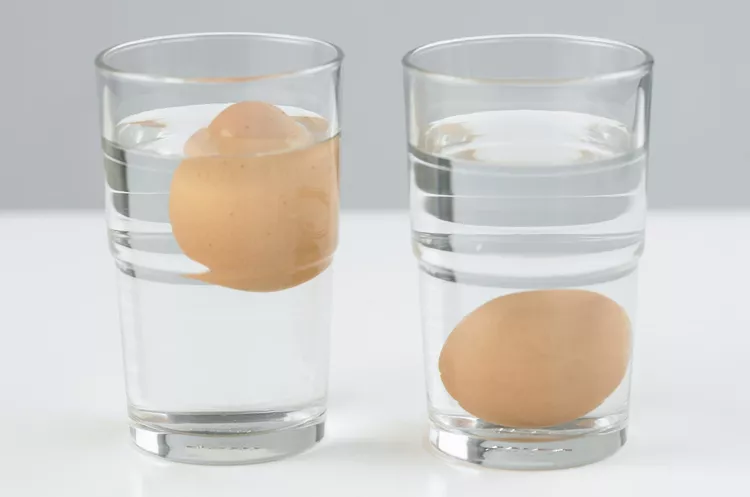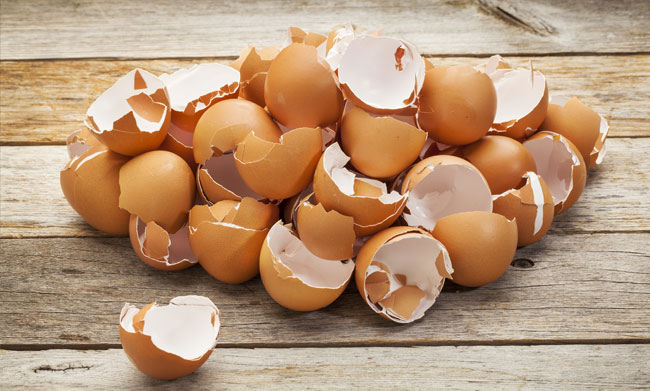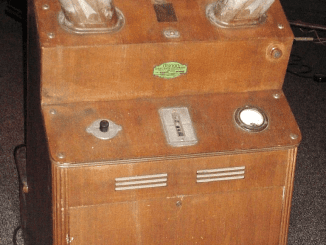Are you staring at a carton of eggs that’s past its sell-by date, wondering whether they’re still safe to eat? Don’t worry—there are simple methods to check if your eggs are fresh, without the need to crack them open right away. In fact, the printed date on the packaging is often just a guideline, and eggs kept in the refrigerator can stay fresh for several weeks beyond that date.

Here are five easy ways to tell if your eggs are still good, without any guesswork.
1. The Water Test: Does the Egg Float or Sink?
The most popular and foolproof method for checking egg freshness is the float test. To do this, simply fill a bowl with cold water and gently place the egg inside. If the egg sinks and lies flat on its side at the bottom, it’s fresh. If it sinks but stands upright, the egg is older but still safe to eat.
Why does this happen? Eggs have tiny pores in their shells, and over time, air seeps in. The more air inside, the more the egg tilts or floats. If the egg floats on the surface, it’s best to discard it. A floating egg indicates that it’s old and likely spoiled, as gases from decomposition cause it to become buoyant.
2. Give It a Shake: The Sound Test
Another quick method is the shake test, though it’s not as reliable as the float test. Hold the egg up to your ear and give it a gentle shake. If you hear a sloshing sound, the egg may be bad. Fresh eggs have firm yolks and whites that don’t move around much. In contrast, older eggs develop watery interiors, which creates the swishing noise you’re listening for.
No sound when you shake the egg? That’s a good sign. It likely means your egg is fresh and safe to use.
3. The Smell Test: Does It Pass the Sniff Check?
A rotten egg has a very distinct and unpleasant odor—think sulfur. If you crack open an egg and smell anything out of the ordinary, throw it out immediately. This method works best once the egg is open, but in some cases, you might notice a bad smell even before cracking the shell.
Keep in mind, however, that eggs can harbor bacteria like Salmonella without emitting any unusual smells. For that reason, it’s essential to cook eggs thoroughly, ensuring both the yolk and whites are firm. This is especially important when serving eggs to vulnerable individuals like children, pregnant women, or the elderly.
4. Inspect the Shell: Any Cracks or Discoloration?
Eggshells are the first line of defense against bacteria. So, if you notice any cracks, sliminess, or powdery textures on the shell, the egg may have been exposed to bacteria or mold and should be thrown away.

However, if an egg cracks after you’ve bought it but you know it was fresh at the store, it might still be usable. The USDA recommends breaking cracked eggs into a container, sealing it, and refrigerating immediately. Use them within two days to ensure safety.
5. Crack It Open for a Visual Check
Once you’ve cracked an egg, examine both the yolk and the egg white. Fresh eggs have thick whites that stay close to the yolk. As eggs age, the white becomes runnier, and the yolk may flatten out.
Check for any unusual discolorations, too. A greenish or iridescent egg white could indicate spoilage from bacteria, while black or green spots are signs of fungal contamination. However, don’t worry about a bright red blood spot—this is a natural occurrence and doesn’t mean the egg is unsafe.
How to Use Less-than-Fresh Eggs
If you find that your eggs are approaching their expiration date but haven’t gone bad yet, don’t let them go to waste! Older eggs are perfect for boiling, as they’re easier to peel than fresh ones. You can also pickle them by placing hard-boiled eggs in a jar with brine. This is a tasty way to extend their life and create a flavorful snack.

Storing your eggs properly can also make a big difference in how long they stay fresh. Always keep them in the refrigerator, and try to store them in the main part of the fridge rather than the door, where temperatures fluctuate more.
Delicious Recipes to Try with Fresh Eggs
Now that you’ve confirmed your eggs are good, why not whip up a delicious dish? Here are a few recipes you can try:
- Muffuletta Deviled Eggs: A twist on the classic deviled eggs with rich, Mediterranean-inspired flavors.
- Classic Deviled Eggs: A go-to party snack that’s always a hit.
- Creamy Egg Strata: Perfect for breakfast or brunch, this dish layers eggs with bread and cheese.
- Goldenrod Eggs: A retro recipe featuring a creamy egg sauce served over toast.
- Deviled Egg Dip: If you love deviled eggs, this dip version is a must-try for your next gathering.
Conclusion
Checking if your eggs are still fresh doesn’t have to be a guessing game. With these five easy methods—the float test, shake test, sniff test, shell inspection, and visual check—you can ensure you’re only using safe, fresh eggs in your kitchen. Eggs can last well beyond their sell-by date, and knowing how to test their freshness will save you from unnecessary waste.
So, before you toss out that carton, give these tips a try and enjoy your eggs with confidence!


